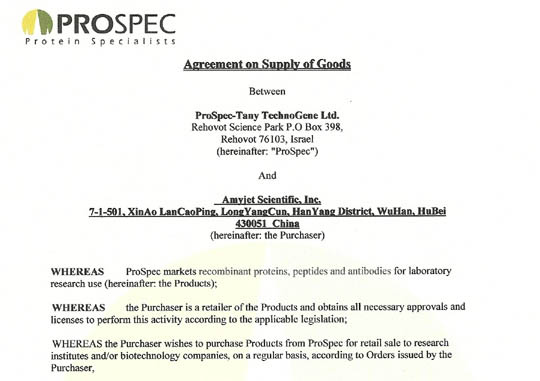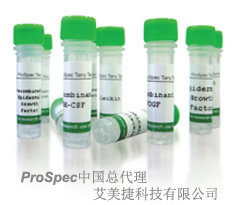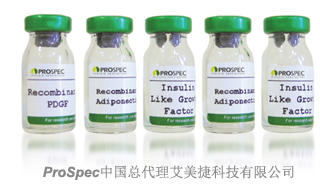Catalogue number
PRO-407
Synonyms
Alpha-1 Microglobulin, A1M.
Introduction
Alpha 1-microglobulin (A1M) is a lipocalin superfamily member (kernal lipocalins). A1M is a low molecular weight protein component of plasma. A1M is distributed in plasma and extravascular compartments of all organs. Alpha-1 Microglobulin is found in mammals, birds, amphibians and fish. The primary sites of A1M synthesis are the liver and the kidney. Around the opening of the lipocalin pocket three lysyl residues are situated; those residues carry yellow-brown modification derived from the binding and degradation of heme and kynurenin (a tryptophan metabolite). A1-Microglobulin’s reductase and dehydrogenase have broad biological substrate specificity properties due to its’ free cysteine side-chain which is located in a flexible loop. Alpha-1-microglobulin is glycosylated by three separate carbohydrate chains: two complex carbohydrates which are N-linked to asparagines at residues 17 and 96, and the other simple carbohydrate which is O-linked to threonine at position 5. The carbohydrates comprise 22% of the total molecular mass of the protein. The glycosylation varies between species. A1M exists in two forms- a free form and complexed to other macromolecules: in humans- complexed to immunoglobulin A (IgA), in rat- complexed to alpha-1-inhibitor-3. Free A1M is exceptionally heterogeneous in charge (therefore also known as protein HC), and is found tightly linked to a chromophore. The free Alpha-1-microglobulin is a monomeric protein composed of one 188 residue polypeptide and contains three cysteines, two of which (residues 75 and 173) form a conserved intra-molecular disulphide link. The chromophoric group is covalently bound to the free cysteine residue at position 34. A1M binds retinol as a major ligand, but this is probably distinct from its covalent chromophore. Half of all human plasma A1M (approximately 0.03mg/ml) forms a 1:1 complex with about 5% of plasma immunoglobulin A. The resulting macromolecular complexes’ molecular weight is 200000, and a plasma concentration of 0.3mg/ml. The complex can exhibit both antibody activity and affect many of the biological actions of free Alpha-1-microglobulin. Alpha-1-microglobulin was first discovered in pathological human urine. It was suggested that A1M might be involved in tissue defense against reactive oxygen species, oxidation by heme and kynurenin. Evidence also suggests that A1M functions in the regulation of the immune system. Other functions include: inhibition of stimulation of cultured lymphocytes by protein antigens; induction of cell division of lymphocytes, a mitogenic effect that can either be enhanced or inhibited by the action of other plasma components; inhibition of neutrophil granulocyte migration in vitro; and inhibition of chemotaxis. Other functions include inhibition of stimulation of cultured lymphocytes by protein antigens; induction of cell division of lymphocytes, a mitogenic effect that can either be enhanced or inhibited by the action of other plasma components; inhibition of neutrophil granulocyte migration in vitro; and inhibition of chemotaxis.
Description
Alpha 1-microglobulin (A1M) is an immunomodulatory protein with a broad spectrum of possible clinical applications and seems a promising marker for evaluation of tubular function.
Source
Purified from the urine of patients with chronic renal tubular proteinuria.
Physical Appearance
Sterile Filtered White lyophilized (freeze-dried) powder.
Formulation
Lyophilized from 0.02M NH4HCO3. May contain traces of buffer salts.
Solubility
Use phosphate buffer, pH>7.0 containing 0.15M NaCl, is recommended.
Stability
Human A1M although stable at room temperature for 3 weeks, should be stored between 2-8°C.
Purity
Greater than 96.0%.
Human Virus Test
Starting material tested and certified negative for HIV I & II antibodies, Hepatitis B surface antigen, and Hepatitis C antibodies.
Safety Data Sheet
Usage
Prospec"s products are furnished for LABORATORY RESEARCH USE ONLY. The product may not be used as drugs, agricultural or pesticidal products, food additives or household chemicals.
ProSpec是一家全球著名细胞因子蛋白及相关抗体生产和研发品牌。ProSpec的生产和研发工厂位于以色列,专注于蛋白(重组及合成)生产研发,其独有的细菌和哺乳动物表达和蛋白折叠技术使其能在17年内成长为国际一流的科研级蛋白供应商。目前ProSpec可以提供细胞因子,生长因子,激素,信号蛋白,病毒抗原等近800种重组蛋白和100多种抗体,是世界上提供蛋白品种最多的公司之一,领先的生产工艺和规模使其可以提供毫克到克级蛋白,价格优于同类公司。绝大部分产品是天然成熟型蛋白,而不含有标签蛋白。考虑到大部分研究者希望能更灵活地配制蛋白溶液,ProSpec-Tany绝大部分产品没有添加保护剂或盐,这就对工艺提出了更高的要求。同时,ProSpec-Tany绝大部分产品为冻干粉,因此易于运输和保存。

 ProSpec-TanyTechnoGeneLtd.公司创立人Dr.Tanchum(Tany)Amarant主要致力于蛋白生物化学方面的研究工作,1947年出生于以色列。1991-1997创建ReProGen公司,从事细胞因子和趋化因子的大量生产及纯化;1997-2000创建ProSpec-TechnoGene,主要生产用于生命科学研究的各种重组蛋白及相关抗体。拥有专利UnitedStatesPatent5434135。
ProSpec-TanyTechnoGeneLtd.公司创立人Dr.Tanchum(Tany)Amarant主要致力于蛋白生物化学方面的研究工作,1947年出生于以色列。1991-1997创建ReProGen公司,从事细胞因子和趋化因子的大量生产及纯化;1997-2000创建ProSpec-TechnoGene,主要生产用于生命科学研究的各种重组蛋白及相关抗体。拥有专利UnitedStatesPatent5434135。
ProSpec的生产和研发工厂位于以色列雷霍沃特(Rehovot),专注于蛋白(重组及合成)生产研发。目前ProSpec可以提供细胞因子,生长因子,激素,信号蛋白,病毒抗原等近800种重组蛋白和100多种抗体,是世界上提供蛋白品种最多的公司之一,领先的生产工艺和规模使其可以提供毫克到克级蛋白,价格优于同类公司。

欢迎各位ProSpec客户及合作伙伴拨打全国免费电话400-6800-868转801/802/803垂询蚂蚁淘科技问询相关产品及解决方案!
代理ProSpec细胞因子、生长因子、激素、病毒抗原等重组蛋白产品简介
为便于客户选购ProSpec公司的各种重组蛋白,特将选购及使用注意事项列举如下:
1、需要考虑细胞因子、生长因子的种属来源和表达细胞选择
ProSpec可以提供多种不同种属来源的细胞因子等重组蛋白,如白介素-3,可以提供人白介素-3、小鼠白介素-3、大鼠白介素-3;而瘦蛋白Leptin则有人源、小鼠源、大鼠源、绵羊源、猪源、河豚源、马源、鸡源、狗源、兔源等十多种不同Leptin。蚂蚁淘科技推荐,建议按照作用的细胞选择相同种属的细胞因子。不过不同种属之间,蛋白同源性(序列一致性)在80%以上的基本上就可确定为有交叉活性,可推荐使用。另外,蚂蚁淘还可以向您提供ProSpec不同种属细胞表达的细胞因子,以重组人血管内皮生长因子(rVEGF)为例,ProSpec可以提供大肠杆菌表达的、酵母Yeast表达的、中国仓鼠卵巢CHO细胞、人胚肾HEK细胞表达的VEGF。可以根据您的实验需求,垂询蚂蚁淘科技有限公司为您推荐不同细胞表达的细胞因子产品。
2、ProSpec细胞因子的溶解和保存建议
ProSpec绝大部分细胞因子产品是天然成熟型蛋白,而不含有载体蛋白(CarrierProtein)或其他添加剂(如BSA、HAS或蔗糖等)。同时,ProSpec-Tany绝大部分产品通常以最少量的盐来进行冻干处理,因此易于运输和保存。所以我们建议在收到产品后,务必在开盖前先离心,使粘在管盖或管壁上的蛋白聚集于管底(此时能否见到白色沉淀均属正常现象)。为获得更好生物活性和保存稳定性,请联系蚂蚁淘科技垂询相关的溶解以保存建议。
领先的生产工艺和规模使其可以提供毫克到克级蛋白,价格优于同类公司,而小包装形式的细胞因子也受广大研究生客户喜爱。作为ProSpec的中国总代理,蚂蚁淘科技有限公司为客户精选真核细胞表达、高活性的几十多种常用现货ProSpec细胞因子。更多细胞因子产品请查询蚂蚁淘网站或垂询蚂蚁淘科技有限公司。

ProSpec是一家全球著名细胞因子蛋白及相关抗体生产和研发品牌。ProSpec的生产和研发工厂位于以色列,专注于蛋白(重组及合成)生产研发,其独有的细菌和哺乳动物表达和蛋白折叠技术使其能在17年内成长为国际一流的科研级蛋白供应商。目前ProSpec可以提供细胞因子,生长因子,激素,信号蛋白,病毒抗原等近800种重组蛋白和100多种抗体,是世界上提供蛋白品种最多的公司之一,领先的生产工艺和规模使其可以提供毫克到克级蛋白,价格优于同类公司。绝大部分产品是天然成熟型蛋白,而不含有标签蛋白。考虑到大部分研究者希望能更灵活地配制蛋白溶液,ProSpec-Tany绝大部分产品没有添加保护剂或盐,这就对工艺提出了更高的要求。同时,ProSpec-Tany绝大部分产品为冻干粉,因此易于运输和保存。





















